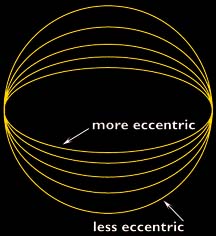This drawing illustrates "eccentricity".
Click on image for full size
Martian Orbital Eccentricity
The orbit of Mars is very oval shaped. The orbit is much more oval shaped than the Earth's orbit. This means that the climate of Mars can change drastically between warm and cold.
You might also be interested in:
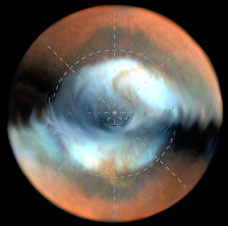
Now let's talk about bad weather on Mars. Bad weather brings clouds and rain to the surface of the Earth. Water covers 2/3 of the surface of the Earth. On Mars, there is not nearly as much water around.
...more
On August 27, 2003, Earth and Mars will be very close together. Well, close for planets anyways. The two planets will still be almost 56 million kilometers (about 35 million miles) apart. They will be
...more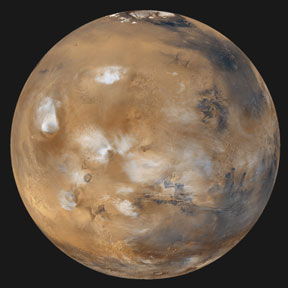
Sometimes Earth gets pretty close to the planet Mars. Mars and Earth will be close to each other on October 30, 2005. Mars will look like a bright red star. Mars will be about 69 million km (43 million
...more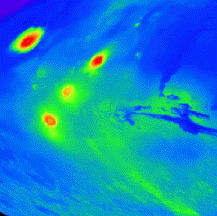
On this map of Mars, the lightly cratered Tharsis Ridge is shown, as well as the heavily cratered Martian highlands (near the bottom of the picture), and Valles Marineris to the right. The volcanoes are
...more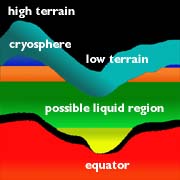
On Mars, the water is trapped, frozen, within the ground. Nevertheless, there is evidence for running water on Mars. When the water is melted and released to the surface, it will run from higher ground
...more
The drawing shows the depth at which water may be frozen into the ground. To have water running on the surface of Mars, this water region must be near to the surface. This may have happened at various
...more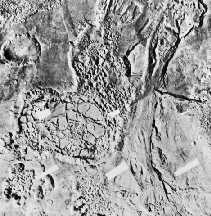
Separate from the Martian outflow channels, or the river valleys, are large Martian lakes (600 km, or ~1000 miles across) which once were part of a flood.
...more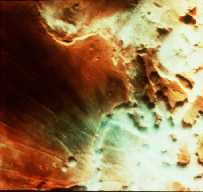
This picture shows fog on Mars. More fog has been seen in images returned by Mars Global Surveyor of the south polar region of Mars. Martian fog may have a little bit of acid mixed in with the water drops.
...more


